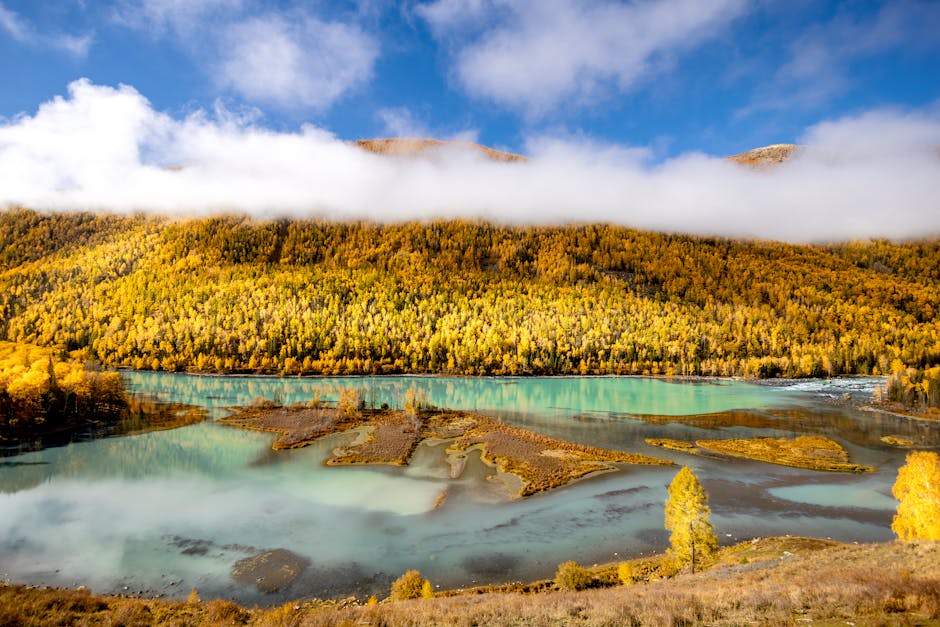⏱️ 4 min read
Did You Know? 10 Strange Facts About Mountains
Mountains have long captivated human imagination and challenged explorers throughout history. These majestic geological formations harbor numerous surprising secrets and fascinating characteristics that many people might not know about. Here are ten remarkable and strange facts about mountains that demonstrate just how extraordinary these natural wonders truly are.
1. Mountains Are Still Growing
Contrary to popular belief, many mountains continue to grow taller each year. The Himalayas, for instance, rise approximately 5 millimeters (0.2 inches) annually due to ongoing tectonic plate collision. This process, though seemingly small, represents significant geological activity that has been occurring for millions of years and continues to shape our planet’s surface.
2. Underwater Mountains Outnumber Visible Ones
There are far more mountains hidden beneath the ocean’s surface than there are on land. These submarine mountains, known as seamounts, number over 100,000, with most rising at least 1,000 meters from the ocean floor. Remarkably, only a small fraction of these underwater peaks have been studied by scientists.
3. The World’s Highest Mountain Isn’t Everest
While Mount Everest is commonly known as the world’s highest peak, Mauna Kea in Hawaii is technically taller when measured from its base on the ocean floor to its peak. Mauna Kea extends 10,211 meters (33,500 feet) from base to summit, with most of its mass hidden underwater, compared to Everest’s 8,848 meters (29,029 feet) above sea level.
4. Mountains Create Their Own Weather
Large mountain ranges can generate their own weather systems. When air masses encounter mountains, they’re forced upward, cooling and condensing into clouds. This phenomenon, known as orographic lift, can create distinctive weather patterns, including rain shadows on one side of the mountain and increased precipitation on the other, effectively influencing regional climates.
5. The Youngest Mountain Is Still Being Born
Paricutin in Mexico holds the distinction of being the youngest mountain ever witnessed forming. It emerged suddenly from a cornfield in 1943 and continued growing for the next nine years, reaching a height of 424 meters (1,391 feet). This event provided scientists with unprecedented opportunities to study mountain formation in real-time.
6. Mountains Harbor Time Capsules
Mountain glaciers contain ancient air bubbles trapped within their ice layers, providing scientists with valuable data about Earth’s atmospheric composition dating back hundreds of thousands of years. These natural time capsules have become crucial in studying climate change and historical atmospheric conditions.
7. The Flattest Mountain Peak
Mount Wycheproof in Australia, while only 43 meters (141 feet) above the surrounding plains, is technically the world’s smallest registered mountain. What makes it particularly unusual is that it has one of the flattest peaks of any mountain, making it appear more like a hill than a traditional mountain.
8. Mountains Can Disappear Overnight
In 1980, Mount St. Helens demonstrated how quickly a mountain can change when its eruption removed approximately 400 meters (1,300 feet) from its peak in a single day. The event dramatically altered the mountain’s appearance and created the largest landslide ever recorded, proving that mountains aren’t as permanent as they might seem.
9. Some Mountains Are Magnetic
Certain mountains, such as Magnetic Hill in Australia and Magnetic Mountain in Missouri, exhibit unusual magnetic properties that can affect compass readings and create optical illusions. These phenomena are typically caused by unique mineral compositions within the mountain’s rock structure, particularly those rich in magnetite.
10. Mountains Have Their Own Sickness
Mountain sickness, or altitude sickness, occurs because mountains can have significantly lower oxygen levels at their peaks. What’s strange is that this condition can affect anyone regardless of physical fitness and can occur at elevations as low as 2,400 meters (8,000 feet). Even experienced mountaineers can suffer from it despite regular exposure to high altitudes.
Conclusion
From growing peaks and underwater giants to magnetic properties and their own weather systems, mountains continue to surprise us with their remarkable characteristics. These ten strange facts demonstrate that despite humans having studied mountains for centuries, these magnificent geological formations still hold many secrets and continue to challenge our understanding of Earth’s natural processes. Their dynamic nature and unique properties make them not just obstacles to overcome or landmarks to admire, but complex systems that play crucial roles in our planet’s geological and ecological balance.
Understanding these unusual aspects of mountains helps us appreciate their significance in shaping our world and reminds us of the importance of preserving these natural wonders for future generations to study and explore. As scientific research advances, we may uncover even more surprising facts about these remarkable features of our planet’s landscape.


